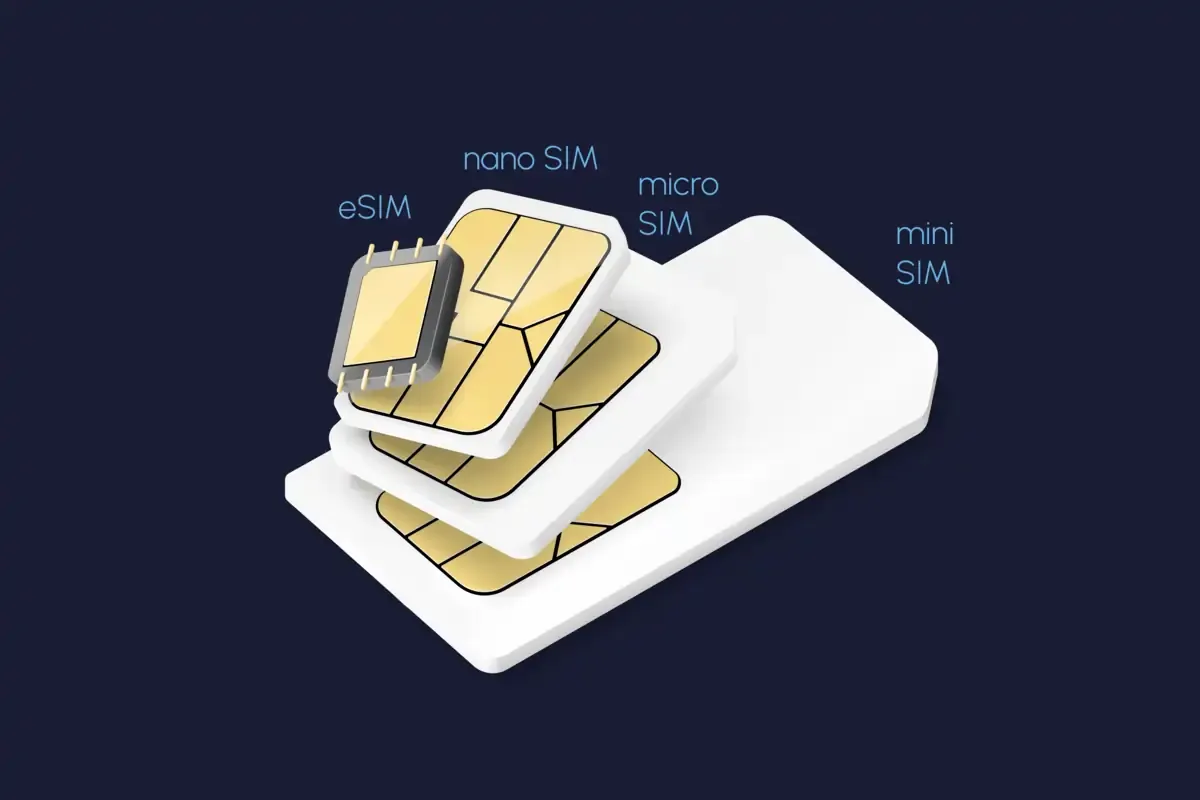eSIM
Can eSIMs Be Tracked? How It Works and How to Keep Your Data Safe
A clear guide to how eSIM tracking works, what it means for your privacy, and practical steps to protect your data while traveling or working remotely.
TL;DR: Yes, eSIMs can be tracked, but no more than physical SIM cards. Tracking relies on your phone’s IMEI, GPS/location services, and network connections, not the eSIM itself. Protect your privacy with VPNs, app permission controls, and smart device settings.

As eSIMs become mainstream, many travelers and digital nomads wonder: Are eSIMs safe? Can they be tracked more easily than a physical SIM?
The short answer: eSIMs do not introduce new tracking risks. Device traceability is tied to your hardware and network activity, not the type of SIM you use. Still, understanding how mobile tracking works, and how to minimize your digital footprint, is key for anyone concerned about privacy.
Understanding eSIM Technology: What It Is and How It Works
An eSIM (embedded Subscriber Identity Module) is a programmable chip built directly into your phone or tablet. Compared with a physical SIM, an eSIM offers:
- Instant carrier switching without visiting a store
- More security against SIM theft or loss
- Extra device space for features like larger batteries
For travelers, the biggest perk is convenience: you can buy install a travel eSIM before departure and land connected, no kiosk or paperwork required.
👉 New to eSIMs? Check out our detailed primer on what an eSIM is for a step-by-step introduction.
Can eSIMs Be Tracked? Myths vs. Reality
Yes. But importantly, eSIMs are not more trackable than physical SIM cards. Device tracking depends on identifiers like IMEI and cell tower data, not the SIM type.
Are eSIMs More Trackable Than Physical SIM Cards?
No. Both eSIMs and physical SIMs can be tracked in the same way when connected to a mobile network.
- The key identifier is your International Mobile Equipment Identity (IMEI) number, which belongs to the device hardware, not the SIM itself. For a breakdown of identifiers like IMEI, ICCID, and EID, see our guide: IMEI vs ICCID vs EID.
- Mobile network operators log device activity for service delivery, network integrity, and regulatory compliance.
👉 The idea that eSIMs are inherently “more trackable” is a misconception. For more on the security differences between the two, see our guide: Are eSIMs Safe?
Do eSIMs Make Phones Immune to Tracking?
No. No connected device is completely immune to being tracked.
- Whether you use an eSIM or a physical SIM, your IMEI and network activity can still be logged.
- Apps, GPS, Wi-Fi, and Bluetooth also contribute to location traceability.
- For extra context, you can refer to our guide to understand the type of information that is typically stored in SIM cards.
👉 An eSIM may improve convenience and security, but it doesn’t provide blanket privacy. If you’re concerned about data exposure, note that sharing is limited to hotspots, you can’t just copy an eSIM profile. See our article: Can eSIMs Be Shared?.
Can eSIMs Be Activated or Tracked Without Consent?
No. Like physical SIMs, eSIMs require user authentication and carrier approval before they can be activated.
- Unauthorized activation would violate privacy regulations and is illegal in most jurisdictions.
- You maintain full control of your eSIM profile. If needed, you can delete an eSIM from your device anytime.
👉 Claims of “silent activation” or “secret tracking” via eSIMs are misleading. Your number also remains in your control as installing an eSIM does not change your phone number.
How Mobile Devices Are Tracked (Regardless of SIM Type)
Whether you’re using a physical SIM or an eSIM, tracking typically involves:
- IMEI Tracking: Each phone as a unique IMEI. This can be used by network operators and law enforcement to track a device, irrespective of the SIM type (eSIM or physical SIM).
- Location Services: GPS, Wi-FI and Bluetooth can pinpoint your location. You can control this by adjusting app permissions and device settings.
- Cellular Network Data: Mobile network operators can track the location of your device as it connects to their network, regardless of the type of SIM card.
- App and Service Permissions: Many apps and services request location information for legitimate purposes, such as navigation, weather, and social media. Review permissions regularly to prevent unnecessary data collection.
👉 If you’re using multiple devices, you can safely extend your data via tethering. Learn more here: Can I Install an eSIM on Multiple Devices?.
How to Protect Your Privacy with eSIM
While eSIMs don’t create new tracking risks, you should still take precautions to safeguard your digital privacy:
- Manage App Permissions: Only grant apps access to your location, mic, or camera when absolutely necessary.
- Use a VPN: A VPN encrypts your data and hides your IP address. Essential when using public Wi-Fi. (See our Public WiFi Safety Guide).
- Control Location Services: Set apps to “While Using App” instead of “Always.” Disable GPS when not needed.
- Be Mindful of Sharing: Oversharing location or personal data on social media increases exposure.
- Secure Your Device: Enable biometrics, strong passcodes, and keep software updated.
- Know Your Identifiers: Understand the role of IMEI, ICCID, and EID (see our IMEI vs ICCID vs EID guide).
Conclusion
By practicing good digital hygiene - VPNs, permission control, and device security - you can enjoy the flexibility of eSIMs without compromising your privacy.
Frequently Asked Questions (FAQs) about eSIM Tracking
Can my eSIM be tracked if my phone is off?
No. Once powered off, your phone can’t be tracked via SIM. Some devices (e.g. Apple’s Find My) may still be discoverable via Bluetooth relays.
Does using an eSIM reveal more personal data?
No, using an eSIM does not inherently reveal more personal data than a physical SIM. The data collected and shared depends more on your device settings, app permissions, and the privacy policies of your service providers.
Can I prevent my eSIM from being tracked?
While you can take steps to minimize traceability (e.g., turning off location services, using a VPN, managing app permissions), complete untraceability is difficult for any connected mobile device. The eSIM itself is not the primary mechanism for tracking.
What is the IMEI number and how does it relate to eSIM tracking?
The IMEI (International Mobile Equipment Identity) is a unique 15-digit number that identifies your specific mobile device. It's a hardware identifier, not tied to the SIM. Devices are primarily tracked via their IMEI by network operators, regardless of whether an eSIM or physical SIM is installed.



